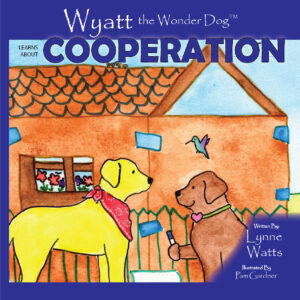Teaching kids to manage negative feelings
Kids and Self Talk
A typical classroom lesson on recognizing feelings is useful and gives kids a common language for expressing their feelings. However, it is a basic lesson and doesn’t really cover all the bases in helping kids manage feelings, especially negative ones. What can we teach the child who needs anger management strategies or the child who is anxious and fearful, beyond how to recognize these feelings and positive ways to act them out?
Typical lessons on managing emotions teach kids to do things that redirect their attention or to do something that helps them calm down so they can regain control. An example of redirecting is when you are angry, you decide to read a book or watch a movie and the feeling will go away. An example of a calming technique is to count to 10 or take deep breaths. These are good ideas and a great start to managing emotions. However for the child that is really challenged with feelings that quickly rage out of control, they are a first step which needs to be followed up with other skills.
What if we also taught kids to use self-talk to manage feelings that are uncomfortable or feelings that cause problems and ultimately interfere with living their best life? Here’s what it would look like:
- Recognize and observe the feeling-“I’m feeling angry because my heart is beating fast, my hands and teeth are clenched and I’m breathing fast.
- Reflect on the mental message that created the feeling– “I’m thinking… I had the toy first and my sister shouldn’t have taken the toy without asking.”
- Regulate the strength of the feeling by using a feeling scale- “On a scale from 1-10 what intensity of feeling does this situation call for ?”
- Change the message to change the feeling-“What if I thought instead “It’s okay for someone else to play with the toy. It’s okay for me to share the toy but I’d like to be asked first.”
- Determine behavior and actions based on the new calmer feeling– “I can talk to my sister and tell her that I don’t mind sharing the toy but I’d like for her to ask me first.“
If you are thinking that learning and modifying self talk takes a lot more time and effort than just telling someone to count to 10 when they are mad… you are right. On the other hand, you are teaching kids the vital life skill of how to manage feelings rather than letting feelings run the show. Understanding how thoughts create feelings rather than the other way around is empowering because it doesn’t teach a pat response to coping with a negative feeling. Instead it teaches kids how to manage their self-talk in a positive way that is applicable to any situation. It’s also much more effective. After all, how often have you seen a kid stop, count to ten and then handle anger appropriately? How often have you done it? See what I mean?
Sometimes simple isn’t better.

Wyatt the Wonder Dog Learns about Cooperation
Wyatt wants to play Frisbee. Max want to build a fort and Callie wants to have tea party. How do the three friends reconcile their differences? Can it be done? When Wyatt doesn’t get his way, Max’s mother suggests he be the Superhero for the day. Join Wyatt as he learns how the magic of cooperation and compromise can bring the five friends closer together.
Feeling left out? Need help getting along with friends? Wyatt the Wonder Dog books weave important life skills into engaging story telling. Join Wyatt as he learns how to be the superhero in his group of friends by using cooperation and compromise.
~MaryFrances Gonzalez MACCC-SLP

[…] how to manage emotions in a positive way. Most of us simply learn that we need to steer clear of negative emotions and strive for positive emotions at all costs. This might mean stuffing the negative ones and […]